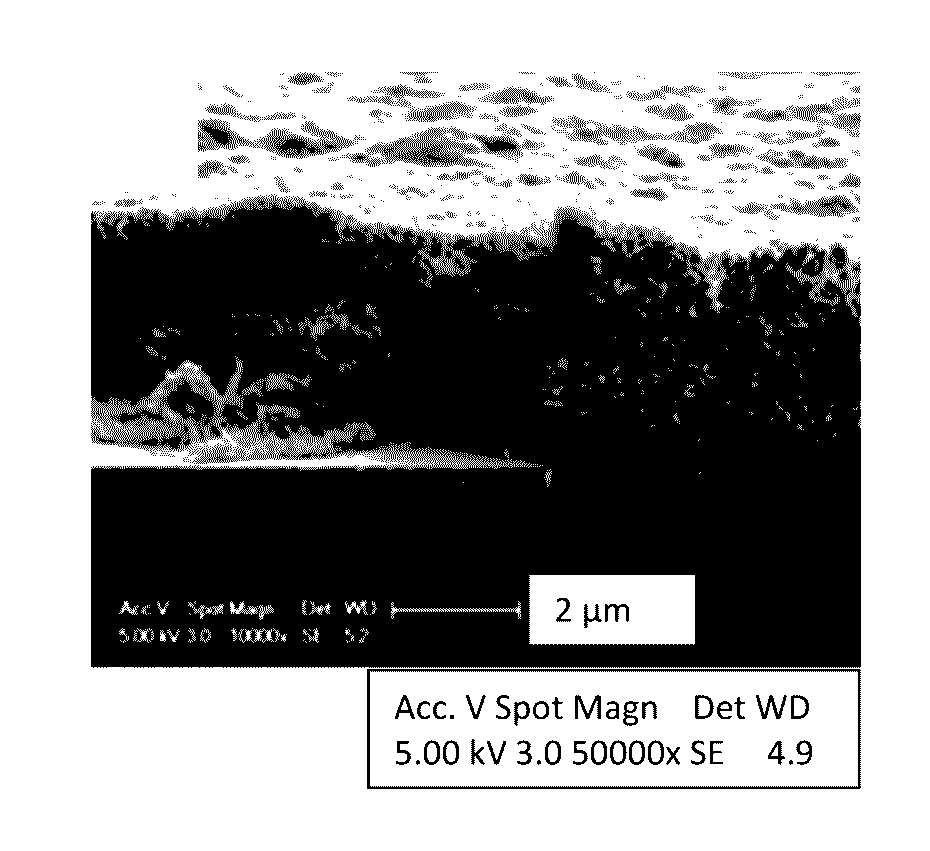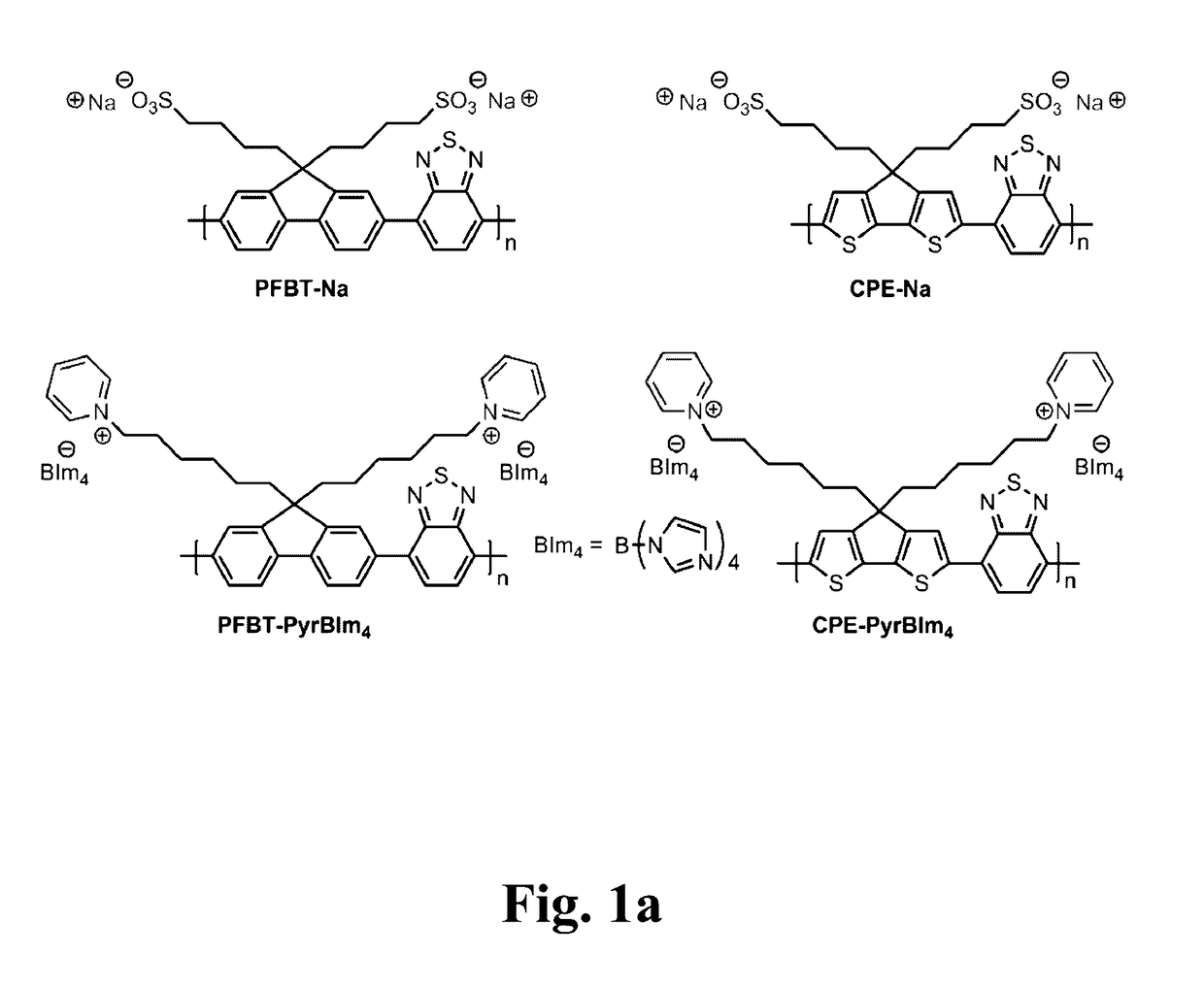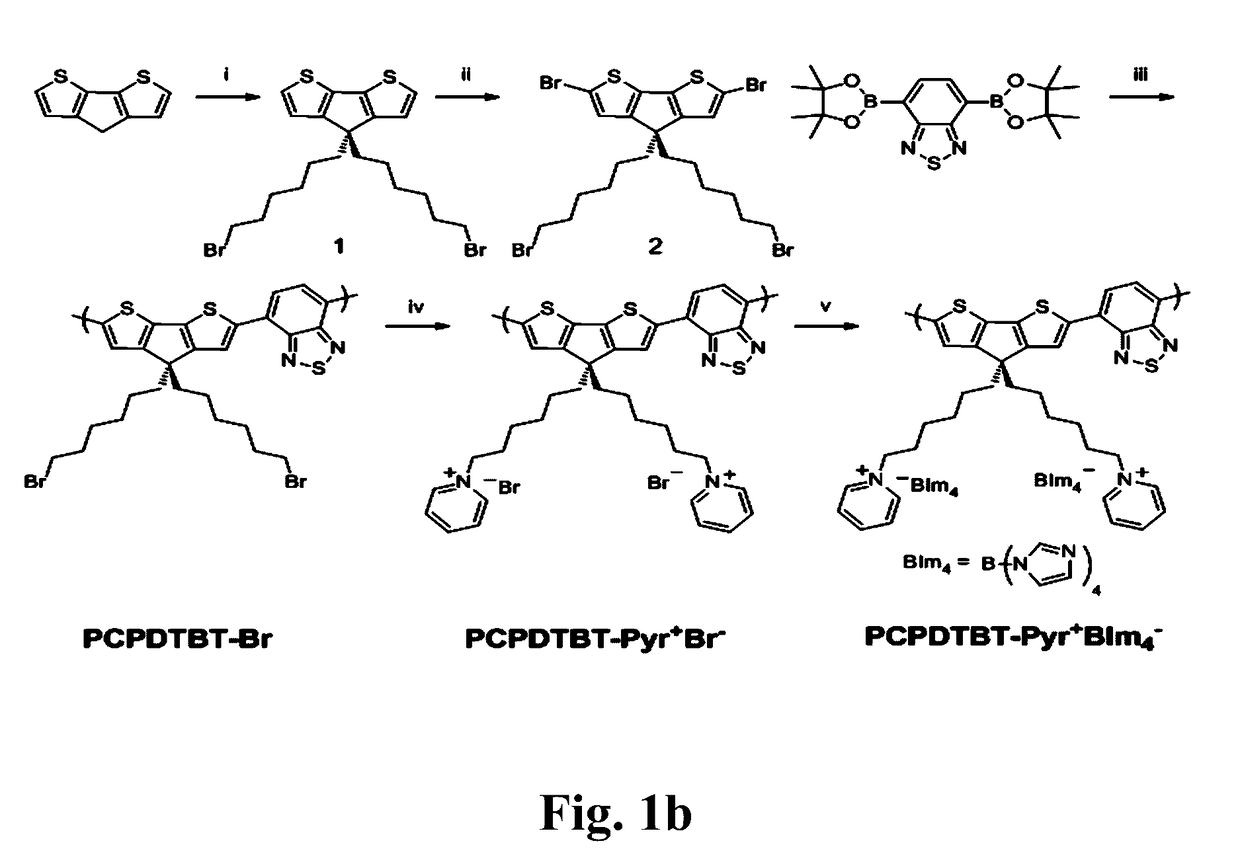Doping preferences in conjugated polyelectrolyte/single-walled carbon nanotube composites
a technology of single-walled carbon nanotubes and conjugated polyelectrolyte, which is applied in the direction of thermoelectric device details, junction materials of thermoelectric devices, etc., can solve the problems of miscible cpe/swnt complexes in polar solvents and insufficient stability of resulting materials for long-term device applications, and achieve the effect of increasing solubility
- Summary
- Abstract
- Description
- Claims
- Application Information
AI Technical Summary
Benefits of technology
Problems solved by technology
Method used
Image
Examples
example structures
and Fabrication
[0024]FIG. 1a provides the molecular structures of the four CPEs included in our studies. Detailed synthetic procedures and characterization are provided in our publications [17].
[0025]FIG. 1b shows the synthesis of PCPDTBT-Pyr+BIm4−(CPE-PyrBIm4), comprising Suzuki cross-coupling polymerization of an alkyl bromide-substituted cyclopentadithiophene and the bis-boronic ester of benzothiadiazole to generate the neutral precursor polymer, PCPDTBT-Br. Post-polymerization quaternization with pyridine introduces the cationic functionalities and yielded PCPDTBT-Pyr+Br−. As a final chemical modification, the bromide counterions in PCPDTBT-Pyr+Br−were exchanged with the larger tetrakis(1-imidazolyl)borate (BIm4−) anion to provide PCPDTBT-Pyr+BIm4−.
[0026]FIG. 1c shows the synthesis of PCPDTBTSO3K (an analogue of CPE-Na while the counterion Na+ is replaced by K+. Synthesis of CPE-Na follows the same procedure), comprising alkylation of commercially available cyclopentadithiophene...
PUM
| Property | Measurement | Unit |
|---|---|---|
| n-type conductivity | aaaaa | aaaaa |
| n-type conductivity | aaaaa | aaaaa |
| p-type conductivity | aaaaa | aaaaa |
Abstract
Description
Claims
Application Information
 Login to View More
Login to View More - R&D
- Intellectual Property
- Life Sciences
- Materials
- Tech Scout
- Unparalleled Data Quality
- Higher Quality Content
- 60% Fewer Hallucinations
Browse by: Latest US Patents, China's latest patents, Technical Efficacy Thesaurus, Application Domain, Technology Topic, Popular Technical Reports.
© 2025 PatSnap. All rights reserved.Legal|Privacy policy|Modern Slavery Act Transparency Statement|Sitemap|About US| Contact US: help@patsnap.com



